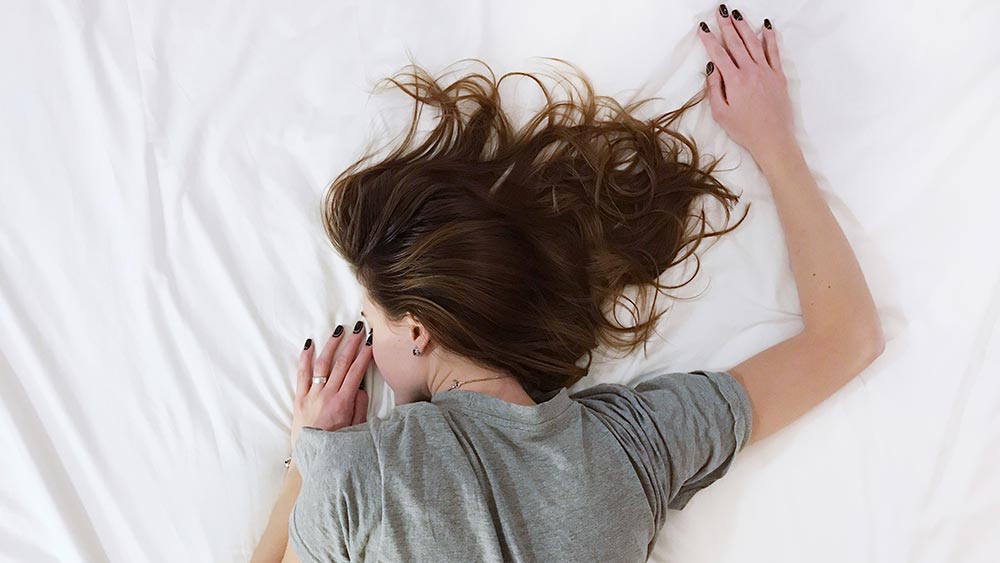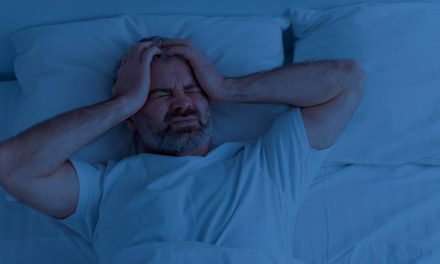When it comes to natural highs, none is as inexpensive, safe, available, or natural as sleep. According to experts, if you want to be fully alert, in a good mood, mentally sharp, creative and energetic all day, you probably need to spend at least one-third of your life sleeping; that means eight hours a night.
Life is complex and its highest goal seems to be achieving and sustaining dynamic balance in all its systems—physical, mental, emotional and social. Sleep is an essential part of that balance. Nearly all animals and even some plants sleep on a regular basis. In sleep, creatures rest, repair and rejuvenate themselves. Our body is governed by dozens of internal clocks that coordinate hormone production, hunger, moods, body temperature and energy level. Many of these are related to our patterns of sleeping and waking.
Just like our body’s overuse of the stress response, our genetic blueprint for sleep has not evolved quickly enough to keep pace with our emerging 24-hour-a-day lives. Thomas Edison’s proudest invention, electric lighting, ruined people’s sleep habits. Before that invention, most Americans slept an average of 10 hours a night. In the 1950s and 1960s, the average dropped to eight, and it now hovers around seven and continues to fall. Today, more than one in three people boast of sleeping six hours or less. The trend is similar throughout the world.
Even minimal sleep loss can have profound effects on all aspects of our lives. We are less alert and attentive, more irritable and moody, and our relationships suffer. As our concentration and judgment diminish and our ability to perform even simple tasks declines, our true productivity shrinks. At the same time accident rates increase, as do health problems, particularly those in our gastrointestinal, cardiovascular and immune systems.
When we lose sleep, or our sleep is of poor quality, we also put ourselves and those around us at high risk for accidents. Drowsy drivers cause at least 100,000 highway accidents and 1,500 deaths in the U.S. each year. Perhaps nothing brings the point home more clearly than the finding that there is a seven percent increase in accidental deaths in the four days after we lose one hour of sleep following the spring shift to daylight saving time, compared to the week before and the week after. The pattern is reversed in the fall, when we gain an hour’s sleep for one night.
A “Doing” Society
As a culture we don’t respect or value being, dreaming or sleeping. As a result we don’t spend enough time on it—time is money, after all. In the past 25 years we have added 158 hours to our annual work and commuting time or a full month of working hours. According to William C. Dement, MD, PhD, director of the Sleep Disorders Clinic and Laboratory at the Stanford University School of Medicine, working mothers with young children have added 241 hours to their work and commuting schedules since 1969. Dement passionately believes “. . . Americans need to wake up to the crucial importance of sleep in their lives.”
Studies by Dr. Michael Irwin and colleagues at the University of California San Diego and San Diego Veterans Affairs Medical Center suggest that even a modest loss of sleep reduces the body’s immune response. Twenty-three healthy men, aged 22–64, spent four nights in a sleep lab. They were allowed to sleep normally the first two nights but the third night they were kept awake from 3:00 to 7:00 A.M. The following morning, for 18 of the men, the activity of the immune cells that fight off viral infections fell significantly. When the men were allowed to sleep through the next night uninterrupted, the level of immune cells returned to normal. This indicates that sleep deprivation—even one-half night of lost sleep—decreases the body’s ability to ward off infection.
The National Sleep Foundation points to our escalating pace of life, work pressures and aging as the primary reasons why many medical specialists now believe sleep disorders to be the number one health problem in America.
|
CAUSES and TREATMENTS for INSOMNIA
|
|
| Causes | Possible Treatments |
| Stress, depression, anxiety | Psychotherapy and/or medication |
| Irregular sleep schedule | A regular sleep/wake schedule |
| Associating bed with alert activities | Relaxing bedtime schedules |
| Exercising too close to bedtime | Exercising earlier in the day |
| Caffeine | No caffeine |
| Excessive alcohol intake or abuse | No evening alcohol |
| Nicotine | No smoking |
| Hormonal shifts especially related to menopause | Hormonal evaluation and treatment |
| Sleep apnea | Medical (sleep lab) evaluation for sleep apnea |
Stages of Sleep
To accomplish its critical role of rejuvenation, sleep is a dynamic process with a complex “architecture” all its own. Sleep labs monitor sleep patterns through the use of electrodes attached to specific locations on a subject’s face and scalp. Physiological changes are recorded on graph paper in a series of lines that resemble the jagged outlines of a mountain range.
After about half an hour, one moves into physically restorative sleep, as cells start to repair and rejuvenate. This sleep may be decreased or absent in the elderly, who awaken more frequently during the night. After an hour or so, one shifts into a highly active stage characterized by accelerated dreaming and rapid eye movements, hence the name REM sleep. Though we may dream in all stages of sleep, dreams occur most frequently in REM sleep and are usually more vivid and emotional than during other stages.
It is primarily during REM that our bodies and minds are refreshed and rejuvenated. Newborns spend almost 50 percent of their sleep time in REM; by three months, REM is only 30 percent. At six months, it is down to 20 percent. In rapidly growing young adults, it rises again to 25 percent. For most adults, REM sleep occurs every 90 minutes throughout the night. The first REM period is brief, lasting around five minutes. As each REM period ends, you ascend back into non- REM sleep and then cycle between them for the rest of the night. As the night progresses, REM periods become longer, up to 30–45 minutes, and REM becomes a dominant part of the sleep cycle.
Without enough REM sleep it becomes harder to focus on day-to-day activities. Also, it is believed that during the dreaming of the REM phase, the subconscious mind analyzes the day’s events and processes feelings, also essential for mental health.
Insomnia
Insomnia affects 20 to 43 percent of American adults at some point in their lives. Insomnia most commonly consists of difficulty falling asleep. In fact, 50 percent of senior citizens have difficulty falling asleep on any given night. The National Sleep Foundation (NSF) identifies three categories of insomnia: transient, short-term and chronic. Chronic insomnia afflicts 15 percent of adults, 50 percent of the elderly. It lasts more than a month and sometimes for decades. It can be related to underlying medical, behavioral or psychiatric problems such as depression, possibly involving a serotonin imbalance in the brain.
Simple changes in daily routine may be surprisingly effective in improving sleep quality:
- Avoid caffeinated beverages (even if taken early in the day, they can disrupt sleep)
- Avoid alcohol and nicotine for at least two hours before bedtime
- Exercise regularly, but not too close to bedtime
- Get up at the same time every day regardless of when you went to sleep.
Insomnia rarely exists in a vacuum and is often viewed as a symptom of an underlying problem, much like a fever suggests infection. Sufferers generally have other psychiatric disorders that are leading them to feel distress, such as anxiety and depression. Or they may have more serious underlying physical disturbances including hyperthyroidism, endocrine imbalance, diabetes, hypoglycemia, fibromyalgia, arthritis, cardiac and respiratory problems, sleep apnea, restless leg syndrome or drug and alcohol abuse.
It is important, therefore, to undertake a full investigation of what could be contributing to insomnia before suggesting or undertaking a specific treatment. Unfortunately, only about half the people suffering from sleep disturbances seek the advice of a healthcare professional and many of these individuals are prescribed sleeping pills, while the underlying disorder causing the insomnia goes untreated.
Although the ability to sleep well may diminish with age, the need for sleep does not. In addition to specific sleep disorders, older people are more likely to suffer medical problems that can interrupt, delay and/or shorten sleep, as may some of the drugs used to treat these conditions.
Pharmaceutical Medications
According to the National Sleep Foundation, in the treatment of transient and short-term insomnia “sleeping pills have a role” but “once the source of the stress or disruption is dealt with or improved sleep hygiene shows positive effects, medications are discontinued, usually within two weeks.” In chronic insomnia, “sleeping pills have a limited role and are not intended for long-term use.” Most medical authorities recommend that benzodiazepine use be limited to four weeks.
Despite the fact that drug therapy is recommended only as temporary sleep support, approximately seven percent of the population take medication regularly, 13 percent use prescription sedatives and 87 percent use over-the-counter (OTC) products. The OTC products include depressants and antihistamines that slow brain activity and cause drowsiness. These drugs break down slowly in the body and produce next-day drowsiness. While they may help with occasional or mild insomnia, they don’t work with continued use, for which they were never intended. They should be used only under doctor’s supervision by those with glaucoma, peptic ulcer, seizure disorder or prostate enlargement.
Benzodiazepines
It is estimated that American doctors write 60 million prescriptions a year for sedative-hypnotic drugs like Valium— up from 47 million in 2006, according to IMS Health, a health care services company. Besides anxiety, insomnia is the most common reason that people take benzodiazepines. There is almost unanimous agreement that these drugs effectively induce sleep, reduce the time it takes to fall asleep and increase total sleep time for the first several nights. Side effects, however, include morning sleepiness, rebound insomnia and disruption in thinking. With significant amounts still in their systems, users are “hung over” the next day and their level of alertness is impaired.
Since insomnia increases with age, many elderly patients are given benzodiazepines, often with disastrous results. Those over 65 comprise about 15 percent of the population, yet they consume up to 45 percent of sleep medications and 40 percent of the nation’s benzodiazepines. The negative effects are worse for them and there is far too little awareness of this phenomenon. A particularly tragic effect of the benzodiazepines is an increase in accidents due to a loss of muscle coordination, which appears to strike the aged more than younger patients.
Benzodiazepines: Tolerance and Addiction
At any age benzodiazepines quickly produce a tolerance, so that one has to increase dosage to achieve results. Worst of all, 15 to 30 percent of long-term users become addicted. Most research has shown that their beneficial effects for sleep last only a few weeks, yet many patients feel unable to sleep without them after months or even years of use.
Research indicates that benzodiazepines interfere with REM sleep. Neurotransmitters such as norepinephrine and serotonin are considered crucial for new learning and retention.
During REM sleep, the brain’s neurotransmitter supply is replenished. By inhibiting neurotransmitter restoration, a lack of quality sleep interferes with the ability to learn and remember.
Adequate REM is vital for memory storage, retention, organization, reorganization and new learning. A good analogy is that REM sleep is like running a cleanup program on your computer. During the day we generate a lot of open and disconnected circuits and probably end up with plenty of fragmented and corrupted files. Unless we run our nightly cleanup, the next day our human computer is likely to run slower and less efficiently, to say nothing of the occasional system errors and total crashes we’re likely to face.
A recent study at Rush-Presbyterian-St. Luke’s Medical Center in Chicago, Illinois, revealed that increased REM sleep time contributes significantly toward reducing negative mood overnight. Just think of all the prescriptions written for neurotransmitter- enhancing antidepressants when the underlying problem is actually sleep deprivation. As we have seen, some of the very drugs given to treat these symptoms prolong and exacerbate them.
All of this illustrates why the effects of REM deficiency, sleep deprivation and fatigue often develop a self-perpetuating cycle:
- Decreased sleep reduces REM
- Reduced REM prevents rejuvenation
- Unrejuvenated, we are more susceptible to stress
- Feeling stressed decreases sleep.
Statistics On The Elderly And Benzodiazepines
- In a study of 16,000 people over age 65, the risk of traffic accidents was significantly greater for those taking benzodiazepines.
- In the United States, falls are a leading cause of accidental death in people over age 65.
- Falls contribute to 40 percent of nursing home admissions.
- Five percent of falls result in hip fractures and other injuries that require hospitalization or immobilization for an extended period.
- The elderly have both a higher risk of falling and a higher rate of hip fractures when taking benzodiazepines.
- In one study involving 6,000 patients, those taking flurezepam, diazepam or chlordiazepoxide had a risk of hip fracture 1.8 times greater than those not taking the drug.
- In a study of 100 hospital patients age 70 and over who had fallen, and 100 controls (also over age 70) who had not fallen, there was a higher rate of falls associated with benzodiazepine use.
L-theanine
Having created a social epidemic of sleep deprivation, we need now to turn away from drugs that basically knock us unconscious then rob us of our precious restorative REM sleep. In addition to its ability to promote calm and well-being, the amino acid found in green tea, L-theanine, may provide an effective natural treatment for insomnia. In an appropriately increased dosage, it seems to work with the body to bring on deep restful sleep without interfering with sleep’s natural cycles. Researchers in Japan gave volunteers 200 mg of L-theanine daily and recorded their sleep patterns on devices worn around their wrists. The L-theanine didn’t cause the subjects to sleep longer, but it did cause them to sleep better. It was documented that sleep quality, recovery from exhaustion, and refreshed feelings were all enhanced by L-theanine. Those taking L-theanine felt like they slept longer than they actually did.
Melatonin
The hormone melatonin is instrumental in establishing our daily rhythms. As we age our melatonin levels decrease, with the steepest decline occurring after 50. Melatonin supplements may play a role in restoring internal sleeping and waking rhythms as it works on an underlying physiological cause of sleep disorder. In an Israeli study at the Technion Medical School in Haifa, men and women between the ages of 68 to 80 had their time to fall asleep cut by more than half (from 40 minutes to 15 minutes) with the use of melatonin. They also reported their sleep was more refreshing.Walter Pierpaoli, MD, PhD and William Regelson, MD, in their book The Melatonin Miracle recommend 1 to 5 mg at bedtime. They suggest you begin with 1 mg the first night and if it works, continue with that dose. If it doesn’t work, increase by 1 mg each night, but only up to a 5 mg maximum. If you wake groggy, they suggest you cut back. Your internal clock should be reset after about two weeks, at which point they recommend you discontinue melatonin.
In my practice I suggest melatonin in the same manner for short-term, low-dose use. While its popularity has increased due to its possible anti-aging effects, it is still a hormone that needs to be appropriately prescribed and monitored.
Serotonin and 5-hydroxy-tryptophan (5 HTP)
Sleep disorders are sometimes linked with lowered brain levels of the neurotransmitter serotonin. Normally before sleep serotonin levels build up and at a certain point the sleep response begins. Melatonin, a metabolite of serotonin, is also involved. Where inadequate levels of serotonin are the problem, antidepressant drugs known as SSRIs, which selectively inhibit serotonin re-uptake, can promote sleep. However, these pharmaceuticals have serious side effects and should be avoided when safer natural treatment is effective. Many of my patients notice that their sleep improves markedly after a few weeks of taking the amino acid, 5-HTP, from 50–200 mg at bedtime. Alternatively you can take L-tryptophan though it requires 10 times the dose. Its sale was severely restricted after a contaminated batch in 1989 caused serious negative reactions, though it is once more on the market. A metabolite of tryptophan, 5-HTP, is readily available as a supplement. Used in depression and anxiety, it likely has a serotonin- and a melatonin-enhancing effect, helping to regulate sleep naturally.
Other Sleep-Promoting Herbs
Other sleep-promoting herbs include California poppy, skullcap, hops, passion flower and reishi mushroom. There are excellent combination formulas that contain combinations of these nutrients.
Sleep Promoting Behavior Changes Our ability to sleep is greatly influenced by simple behavioral habits, patterns and cues. This is good news. Paying attention and taking responsibility for developing healthy “sleep hygiene” has been shown to result in permanent improvement in people’s ability to fall and stay asleep and feel more satisfied with their sleep. There are instructive books on the subject and although they don’t yet provide enough information about herbal treatments, the National Sleep Foundation provides valuable resources.
Keeping a sleep log for a few weeks may be helpful in identifying behaviors that are contributing to your sleep problem. Record when you wake up, go to sleep, drink caffeinated beverages, exercise, eat and any other suspected sleep-stealers.
Adapted from 8 Weeks to Vibrant Health, by Hyla Cass, MD and Kathleen Barnes, available at www.cassmd.com.










